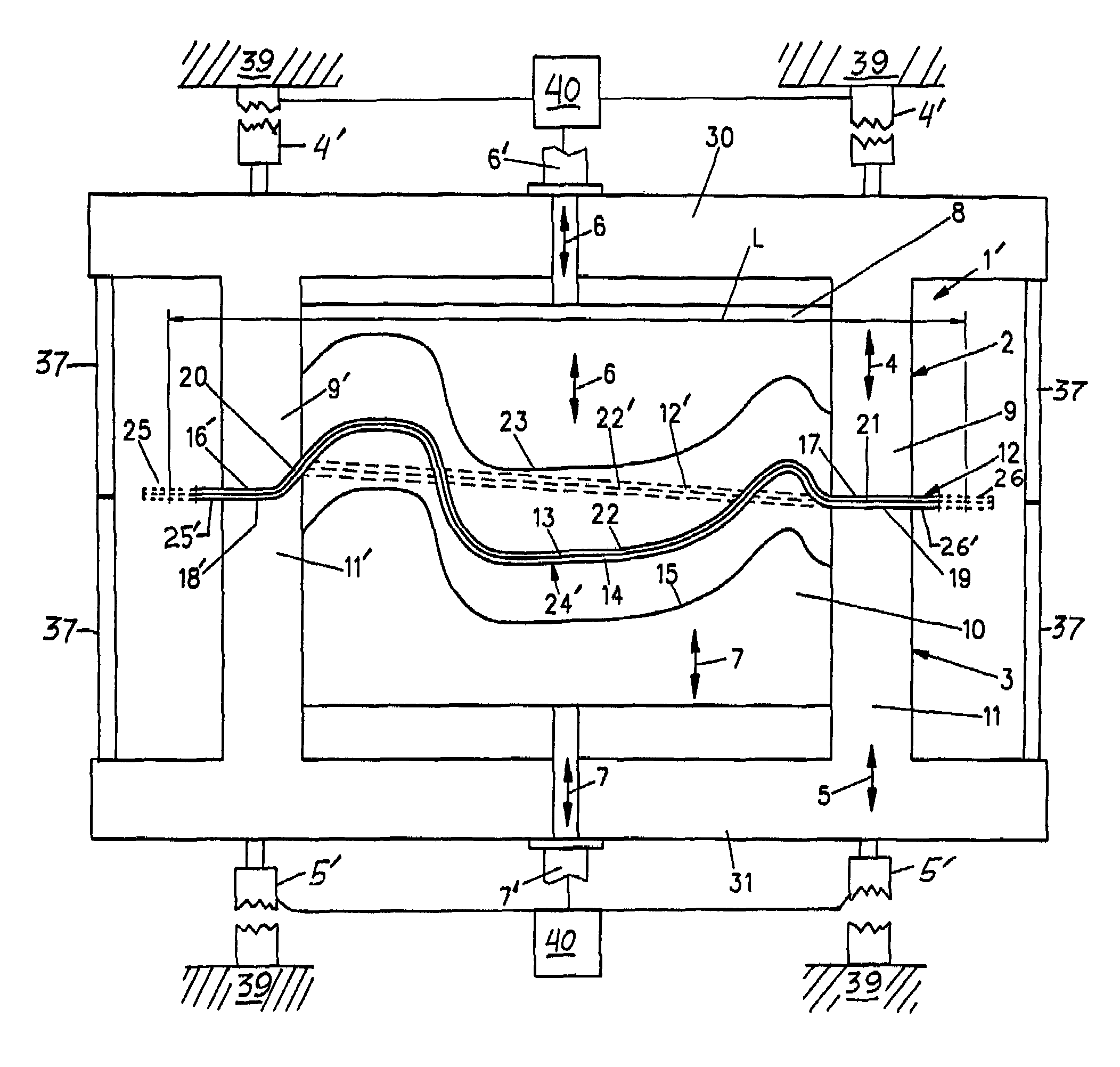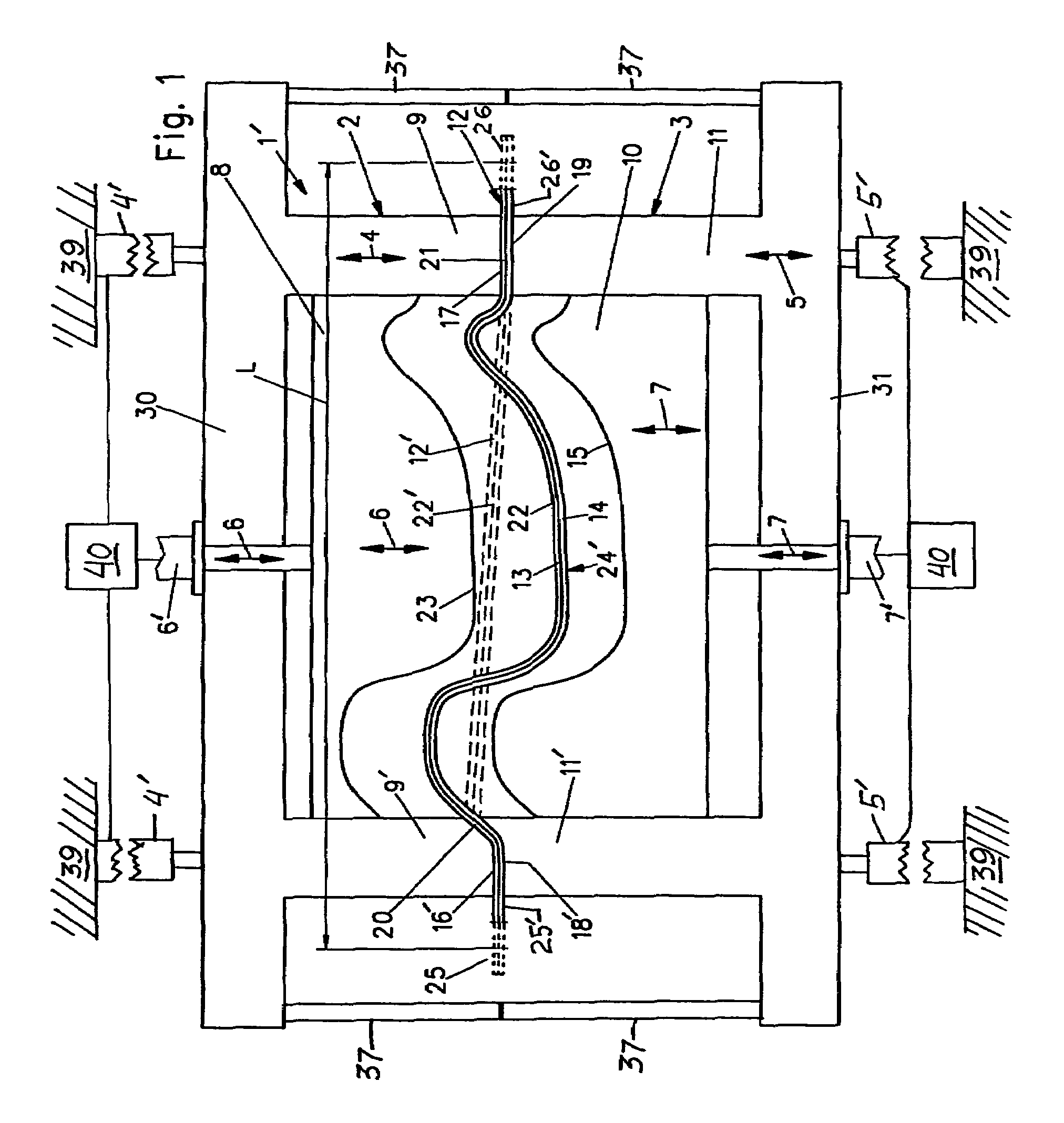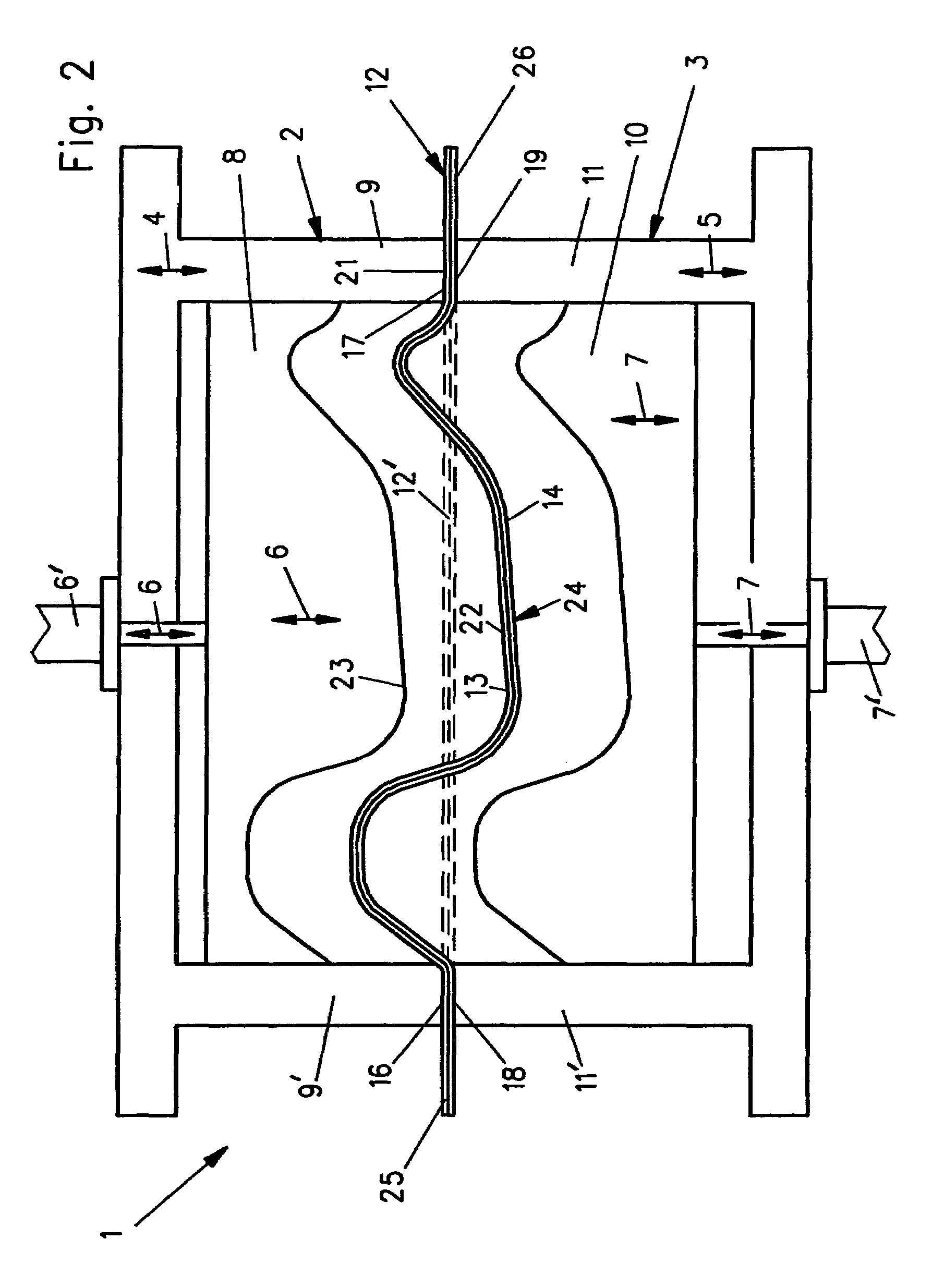Method and apparatus for molding a laminated trim component without use of slip frame
a technology of laminated trim and slip frame, which is applied in the direction of shaping conveyors, baking, domestic objects, etc., can solve the problems of reducing affecting the quality of molding products, so as to reduce the size and space requirement of molding apparatus or systems, and reduce the amount of material waste
- Summary
- Abstract
- Description
- Claims
- Application Information
AI Technical Summary
Benefits of technology
Problems solved by technology
Method used
Image
Examples
Embodiment Construction
[0023]FIGS. 1 and 2 are basically similar schematic diagrams of two slightly different variants of a molding apparatus 1, 1′ according to the invention. First the similar or consistent features of the apparatuses 1 and 1′ will be described, and then the difference will be described.
[0024]The apparatus 1, 1′ comprises a structural machine frame 39 supporting an upper or first mold tool 2, and a lower or second mold tool 3, which are movable relative to one another and relative to the machine frame 39. More particularly, the upper or first mold tool 2 includes a main mold or inner core mold 8 and at least one outer frame or outer edge mold 9, 9′ arranged at at least one lateral edge or a perimeter of the inner core mold 8. Similarly, the lower or second mold tool 3 includes an inner core mold 10 and at least one outer edge mold 11, 11′ arranged at at least one lateral edge or a perimeter of the inner core mold 10. The outer edge mold or molds 9, 9′ can extend continuously around the p...
PUM
| Property | Measurement | Unit |
|---|---|---|
| gap spacing size | aaaaa | aaaaa |
| temperatures | aaaaa | aaaaa |
| width | aaaaa | aaaaa |
Abstract
Description
Claims
Application Information
 Login to View More
Login to View More - R&D
- Intellectual Property
- Life Sciences
- Materials
- Tech Scout
- Unparalleled Data Quality
- Higher Quality Content
- 60% Fewer Hallucinations
Browse by: Latest US Patents, China's latest patents, Technical Efficacy Thesaurus, Application Domain, Technology Topic, Popular Technical Reports.
© 2025 PatSnap. All rights reserved.Legal|Privacy policy|Modern Slavery Act Transparency Statement|Sitemap|About US| Contact US: help@patsnap.com



